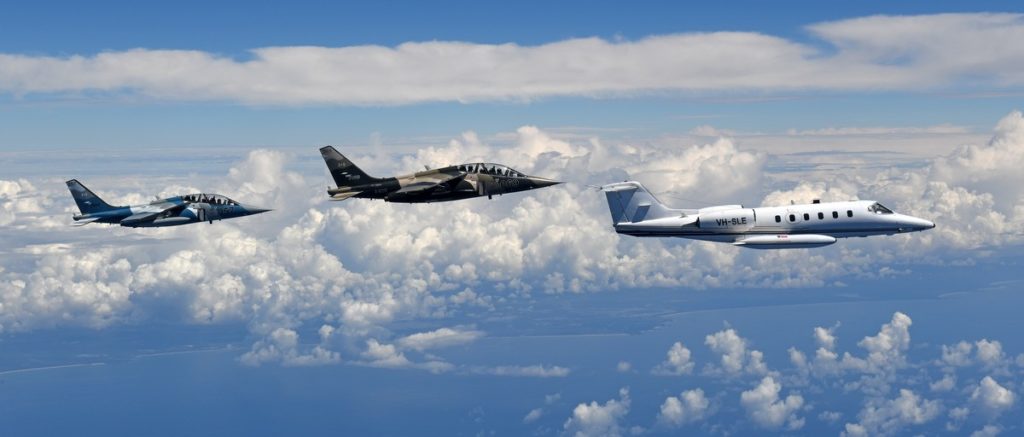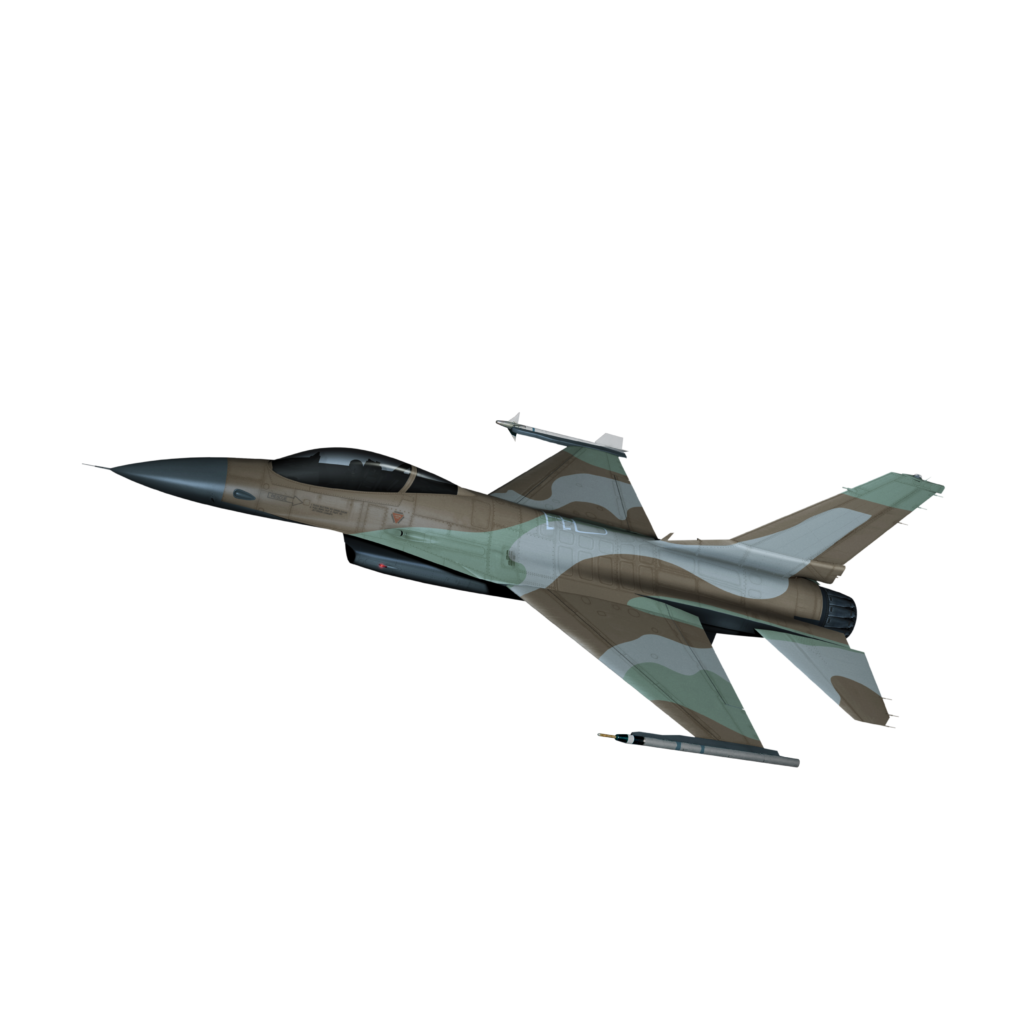Estimated reading time 9 minutes, 17 seconds.
It’s an old mantra among defence and aerospace companies: You first need success in your home country before you can export a capability or service internationally.

That certainly rings true for Top Aces. You can draw a straight line between the Royal Canadian Air Force (RCAF) Contracted Airborne Training Services (CATS) program and the announcement in October that Top Aces’ Arizona-based unit was among seven companies awarded part of the United States Air Force’s $6.4 billion Combat Air Force Contracted Air Support (CAFCAS) contract, said Paul Bouchard, president and chief executive officer.
A pioneer of aggressor or “red” air training for militaries, Top Aces received an indefinite-delivery/indefinite-quantity (IDIQ) contract that will allow it to compete with Air USA, Airborne Tactical Advantage Company, Blue Air Training, Coastal Defense, Draken International and Tactical Air Support for adversary air services at 12 USAF bases, including Nellis, Luke, Hollman, Langley, Eglin and Tyndall.
“Contractors will provide complete contracted air support services for realistic and challenging advanced adversary air threats and close air support threats,” the Department of Defense (DoD) said in a statement. The contract is being run by the Air Combat Command’s Acquisition Management and Integration Center at Joint Base Langley-Eustis in Virginia and runs until October 2024.
“Their intention is to stand up a contracted adversary service, almost like a unit, at all of the major air combat command bases for training on a daily basis,” explained Bouchard. “Once you have an IDIQ, you are then allowed to bid as a prime contractor at any or all of these operating locations, depending on what category of service you are positioned to provide.”
Whether companies become the sole provider at a base or deliver services as part of a teaming arrangement where the demand for full spectrum training is exceptionally high remains to be seen. The USAF estimates the contract could involve between 30,000 and 40,000 hours of flying annually once the program is fully ramped up.
The award is a major breakthrough in the U.S. for the Montreal-based company, which is also pursuing a U.S. Navy fighter services contract likely to be released in late 2019.
Top Aces launched the interim CATS program in the mid 2000s and has spent the past 15 years gaining experience and investing in aircraft and advanced technology. In October 2017, under the banner of Discovery Air Defence, it retained the CATS program with a 10-year deal worth about $480-million that includes options to extend the service to 2031 and the value to as much as $1.4 billion.

Success to the south would not have been possible without the “industry leading” certification and airworthiness standards demanded by the RCAF and Transport Canada, said Bouchard.
“It is as close to a commercial equivalent certification standard as you will find in the world. With small exceptions, we are certified to the same standards as a commercial airliner or business jet. At the same time, we are fully audited and certified under military airworthiness regime. The quality, airworthiness and safety requirements were very high from the beginning … That is where the USAF and other first-tier air forces want to go to.”
To meet the training requirements of next-generation fighters such as the F-35 Lightning II and F-22 Raptor, Top Aces will be the first commercial provider to acquire and configure the F-16 Falcon to replicate a wide range of threats. The company has a binding contract with an undisclosed allied country to acquire 12 Block 15 A /B models.
“The F-16 really is our growth platform for the future, especially for advanced adversary training,” explained Bouchard. “It is the most prolific adversary aircraft in the western world. It is the adversary aircraft of choice just because of its performance characteristics. It is a fourth-generation aircraft, so from an aircraft architecture standpoint, it can be equipped and configured in so many different ways … And it is also scalable given there were more than 4,000 F-16s built. It is still a production aircraft. It has a lot of existing support in terms of sustainment.”
The F-16 was proposed as a possible addition to the Canadian program, and may still come into play once a replacement for the CF-188 Hornets is selected. The USAF contract, however, gave the company the green light to file an application with the U.S. State Department for acquisition and transfer of the frontline aircraft. Under the terms of the CAFCAS deal, Top Aces must have an initial 12 aircraft in service by October 2020, though Bouchard hopes to be ready sooner. The fleet will be based at the F-16 Center of Excellence, near the company’s U.S. headquarters in Mesa, Ariz.
Top Aces has developed an advanced adversary mission system over the past five years for its principle fleets of Dornier Alpha Jets, Douglas A-4 Skyhawks and Bombardier Learjet 35A aircraft. While portions of the system are specific to each aircraft type and training mission, much of the common architecture will be transferable to the F-16, he said.
To deliver the F-16 as a cutting-edge training platform, however, the company will also have to invest in advanced sensors, encrypted datalinks, high-end jamming and weapons capabilities that can realistically represent the latest adversary threats at exercises like Red Flag.

“We need to be able to seamlessly integrate into that (encrypted network) and have both the aircrew and the systems to fly the scenario that the blue force wants on a given a day,” said Bouchard. “That requires advanced aircraft with advanced systems.”
Critical to that capability is the experience of Top Aces’ pilots. All are former air force with over 3,000 flight hours and many were aggressor pilots, fighter weapons instructors or U.S. Navy Top Gun pilots. But the secret sauce may be the maintainers and engineers, he said. Most have decades of experience maintaining legacy aircraft in a commercial context and understand the challenge of managing obsolescence issues. At a time when many air forces are struggling to retain talent enticed by the commercial sector, highly specialized aggressor training services are a way to return a dividend to the military for its investment.
The combination of embedded service experience, platforms and technological capabilities provides a pedigree that can be readily exported as air forces grapple with the high costs of training for fighter pilots, naval crews and ground forces, including joint terminal attack controllers. Bouchard noted that current customers such as the German Armed Forces and possible future customers like the U.S Navy and Australian Defence Force, with whom the company recently completed a two-year trial, are predicting significant increases in their red air training volumes. “These are signals of where the industry is going,” he said, “and I think we bring a piece of the solution.”
“We are committed to delivering a flexible, cost-effective and unique readiness training solution,” said Russ Quinn, president of Top Aces Corp and a former USAF aggressor pilot with over 3,300 flight hours in an F-16.








